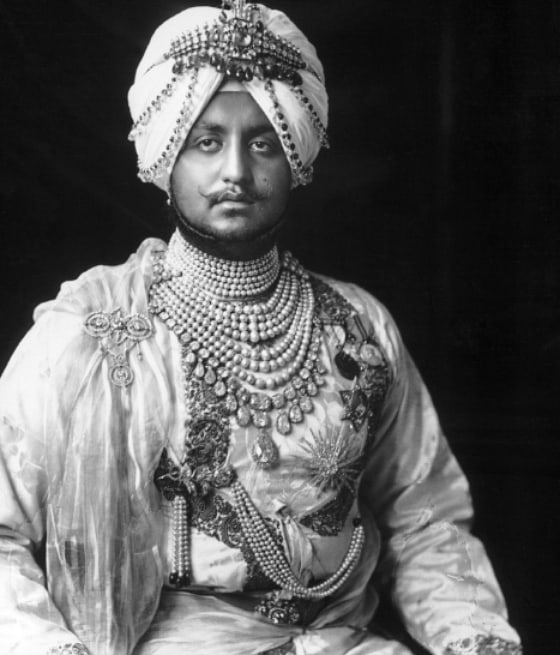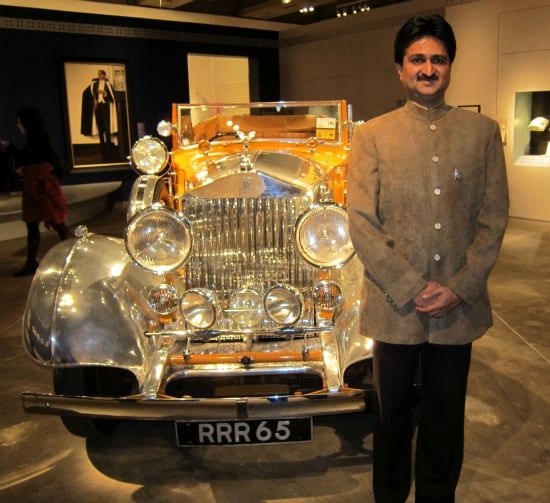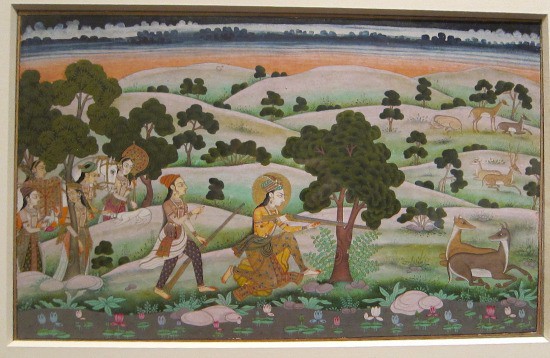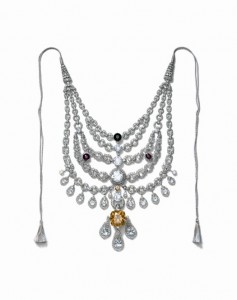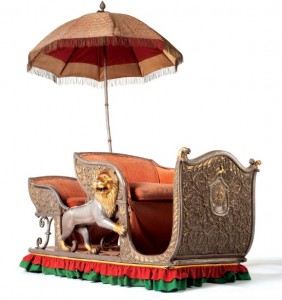Taking pride in Indian culture
As I was leaving the gala opening for the Art Gallery of Ontario’s Maharaja: The Splendour of India’s Royal Courts exhibit, I met an Indo-Canadian couple named Andy and Barbara on the rose-petal-strewn stairs. They were very excited about the exhibit and spoke about the increase in awareness and appreciation of India’s culture over the past 20 or 30 years. since they’ve been in Canada. They were genuinely proud — and with good reason.
And it’s true, India has come a long way since independence was won in 1947. India’s growing economy is currently the envy of the world; yoga is a worldwide phenomenon; Bollywood movies are attracting an increasing amount of attention; and western celebrities are opting to get married in traditional Indian-style weddings in India. India is suddenly trendy — which is ironic, because it is one of the world’s oldest extant cultures. Also one of the most complex and fascinating.
The Maharajas of Hyderabad and Mysore during the 1911 durbar in Delhi (fragment of a painting on display)
This show is a celebration of one facet of the kaleidoscope that is Indian culture — and it is a very dazzling facet. Maharaja: The Splendour of India’s Royal Courts will be on exhibit at the AGO from November 20, 2010 until April 3, 2011. It features more than 200 objects made by or for the maharajas of India from the 17th century to 1947, including jewelry, paintings, furniture and prized photographs by artists such as Man Ray and Cecil Beaton — as well as a saffron-coloured Rolls Royce and a silver carriage. It was was organized in collaboration with the Victoria and Albert Museum in London and we are lucky to have it, this is a Canadian exclusive.
Meeting my first maharaja
The exhibit is much more than simply a collection of dazzling objects. It is the first exhibition to celebrate the opulent world of the maharajas and their unique culture of artistic patronage. The curators and interpreters have done a wonderful job of presenting the treasures in a historical context. As you walk through the elegant rooms, you walk through about 300 years of Indian history, learning about the “maha rajas” — great kings — of India and how they lived, what they valued, the political role they played and how, ultimately, the forces of history circumscribed their powers.
I was lucky to be among the media who got to visit the show with a real maharaja. Yuvraj Saheb Mandhatasinhji of Rajkot’s told me the story of the legendary Star of India, the world’s only saffron-coloured Rolls Royce, which is one of the treasures on display. The stunning automobile was commissioned by his great-grandfather in 1934, who requested that it be painted the sacred colour of Hinduism and adorned with the Gurjurat family’s crest. It is twice blessed, as it carried Mahatma Gandhi sometime during the 1930s. The car was sold to a British collector in the 1960s, and Y.S. Mandhatasinhji bought it back on May 1, 2010.
Maharani power and a gem of a story
I was very interested and gratified to see that women featured more largely in the exhibit that I expected. Here is an example, the description for the painting of Chand Bibi of Bijapur shooting with her ladies (Deccan, circa 1750):
“Women of the court were also sometimes skilled at battle. This is a posthumous image of Chand Bibi of Bijapur, a warrior queen from the 1500s who defended her realm from Mughal forces. As well as being an accomplished soldier, she was also a skilled poet and musician. This idealized and elegant representation shows how her fame endured 150 years after her death.”
I loved the Cecil Beaton and Man Ray photos, the fairy-tale-like silver carriage, the enormous painting of the durbar procession of 1911 passing in front of the Red Fort in Delhi, the black-and-white footage of the durbar, the elegant 20th century saris, many of the smaller the paintings and the jewelry. The jewelry is stunning, especially of course the restored Patiala necklace — another piece in the show that has a fascinating story. In brief, the Maharaja of Patiala — who owned the yellow De Beers diamond, the seventh largest cut diamond in the world — commissioned the necklace in 1928. It was the largest single commission in Cartier’s history. The centrepiece of the elaborate necklace was the De Beers diamond. Sometime after the Raj ended, in about 1948, the necklace went “missing” and was found in 1998, in pieces, in a vintage jewelry store in London. Cartier bought it and spent four years restoring it, substituting synthetic stones for the original De Beers diamond and some of the rubies.
The legacy of the maharajas of India
For me, the Maharaja: The Splendour of India’s Royal Courts exhibit was something very special. I walked through the rich rooms agog, stirred by the artistry and splendour of the treasures, the engaging and beautiful presentation and the Indian classical music playing in the background. I was reminded of the many maharaja-built forts and palaces I have been in India; and also of my life-long fascination with the culture of India and my childhood obsession with the 1,001 Tales of the Arabian Nights. This is the aesthetic that captures my imagination, and always has. It is of course fantasy — but it is also reality. Maharajs were — and are — real, and Indians really do feel pride in their culture.
I share the Art Gallery of Ontario’s hope that Indo-Canadians will flock to the exhibit. Pride can be a positive force for change, and perhaps the positive energy created by events like this will help India to overcome some of its social and image issues. As always, I hope others will see the beauty of India’s culture. I certainly do.
To read the blog I wrote for the exhibit, and to find out why this exhibit means so much to me, see If these walls could speak.
Procession of Raja Ram Singh II of Kota and his son at Kota, c.1850 ©V&A Images/Victoria and Albert Museum, London

Mariellen Ward is a freelance travel writer whose personal style is informed by a background in journalism, a dedication to yoga and a passion for sharing the beauty of India’s culture and wisdom with the world. She has traveled for about a year altogether in India and publishes an India travel blog, Breathedreamgo.com. Mariellen also writes for magazines and newspapers.

